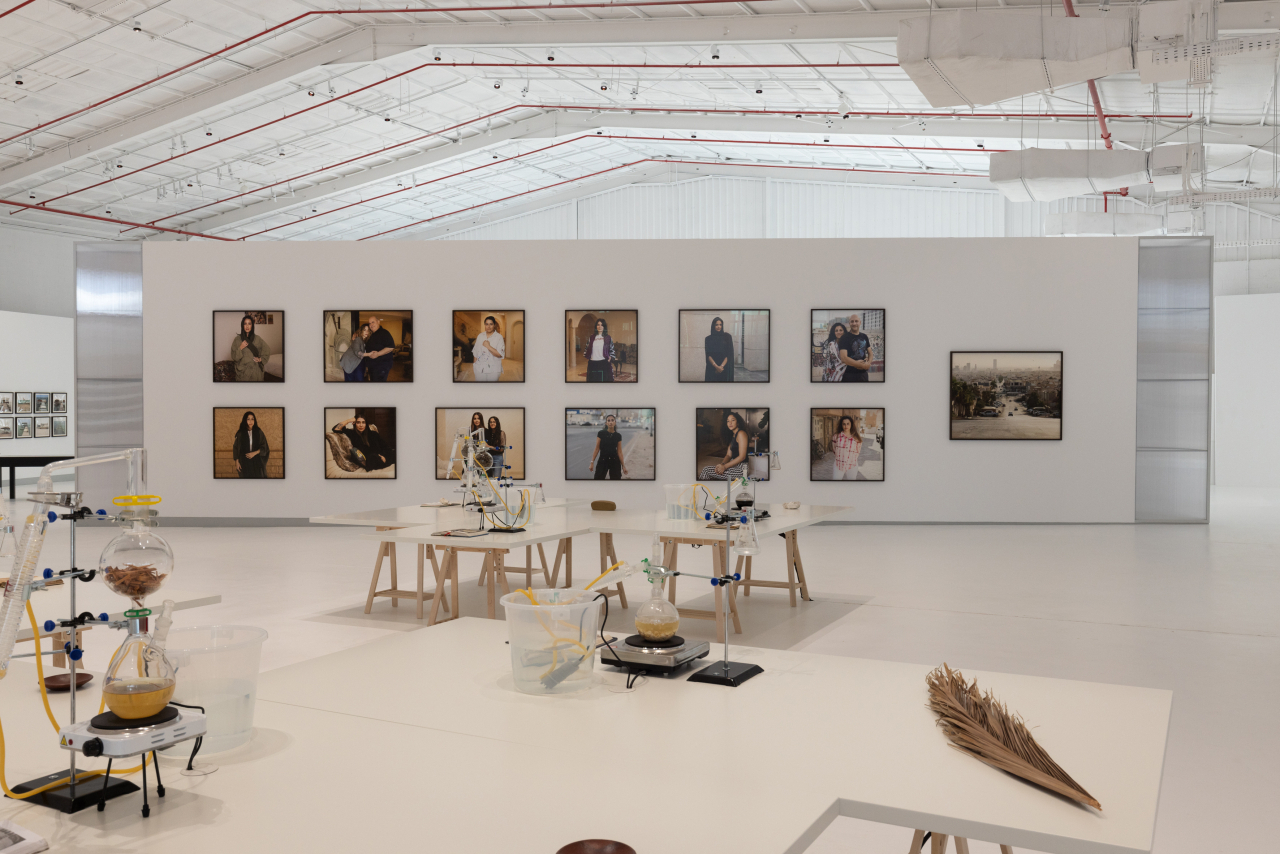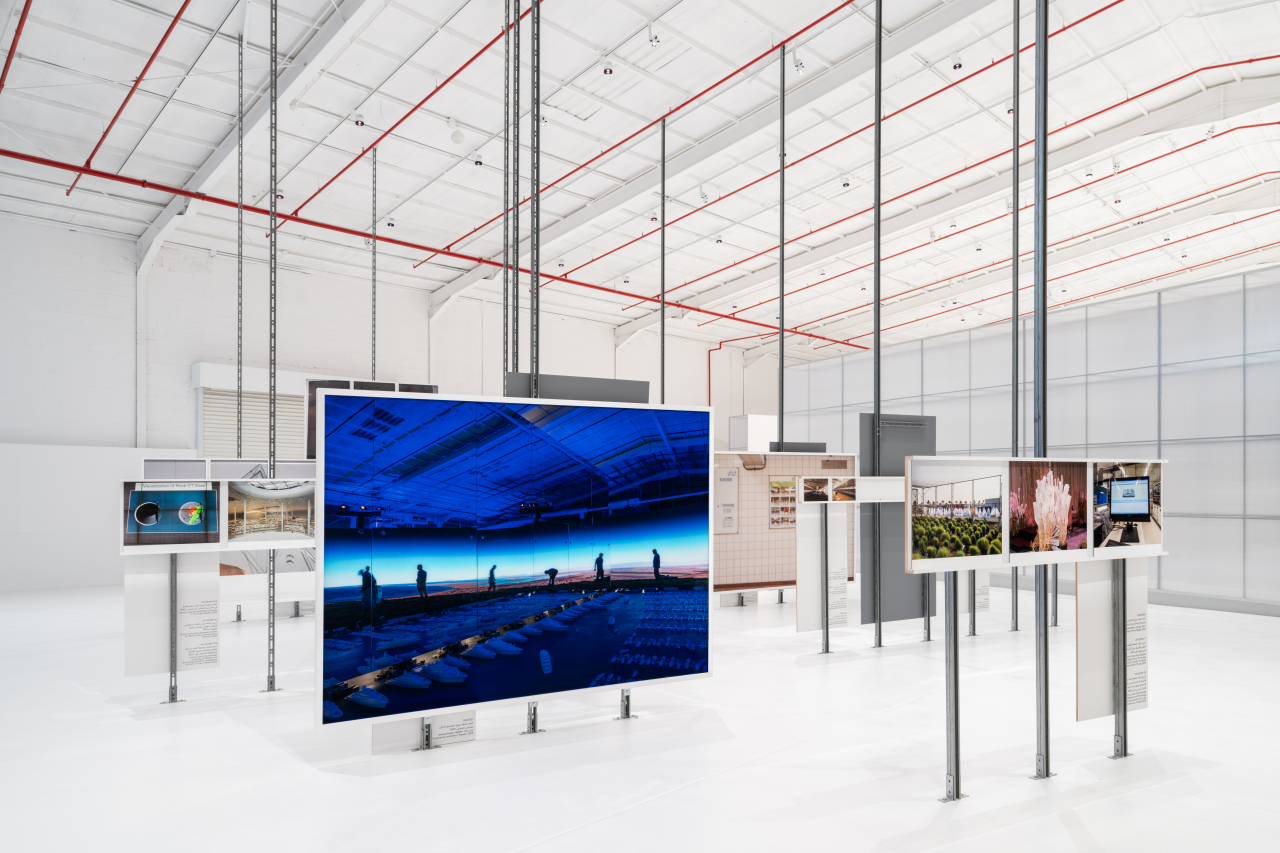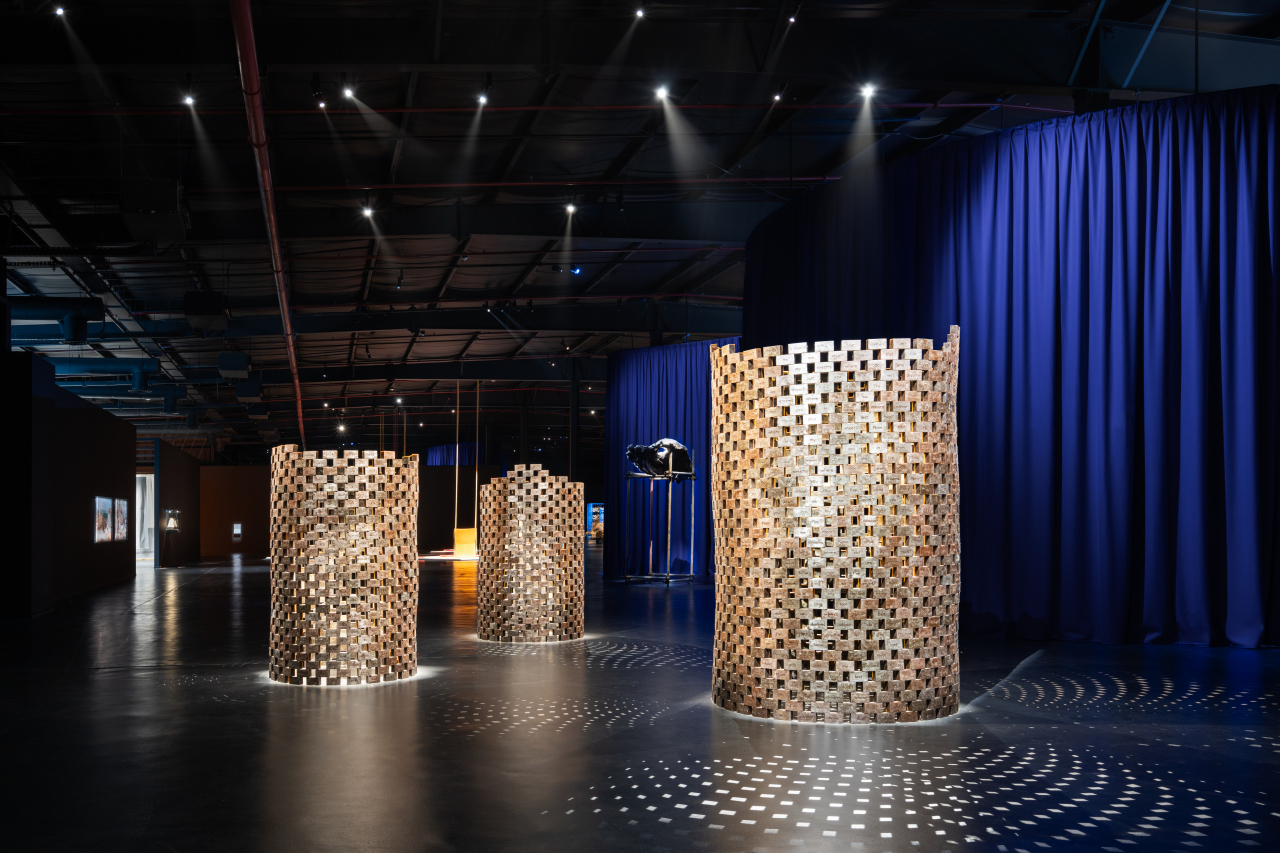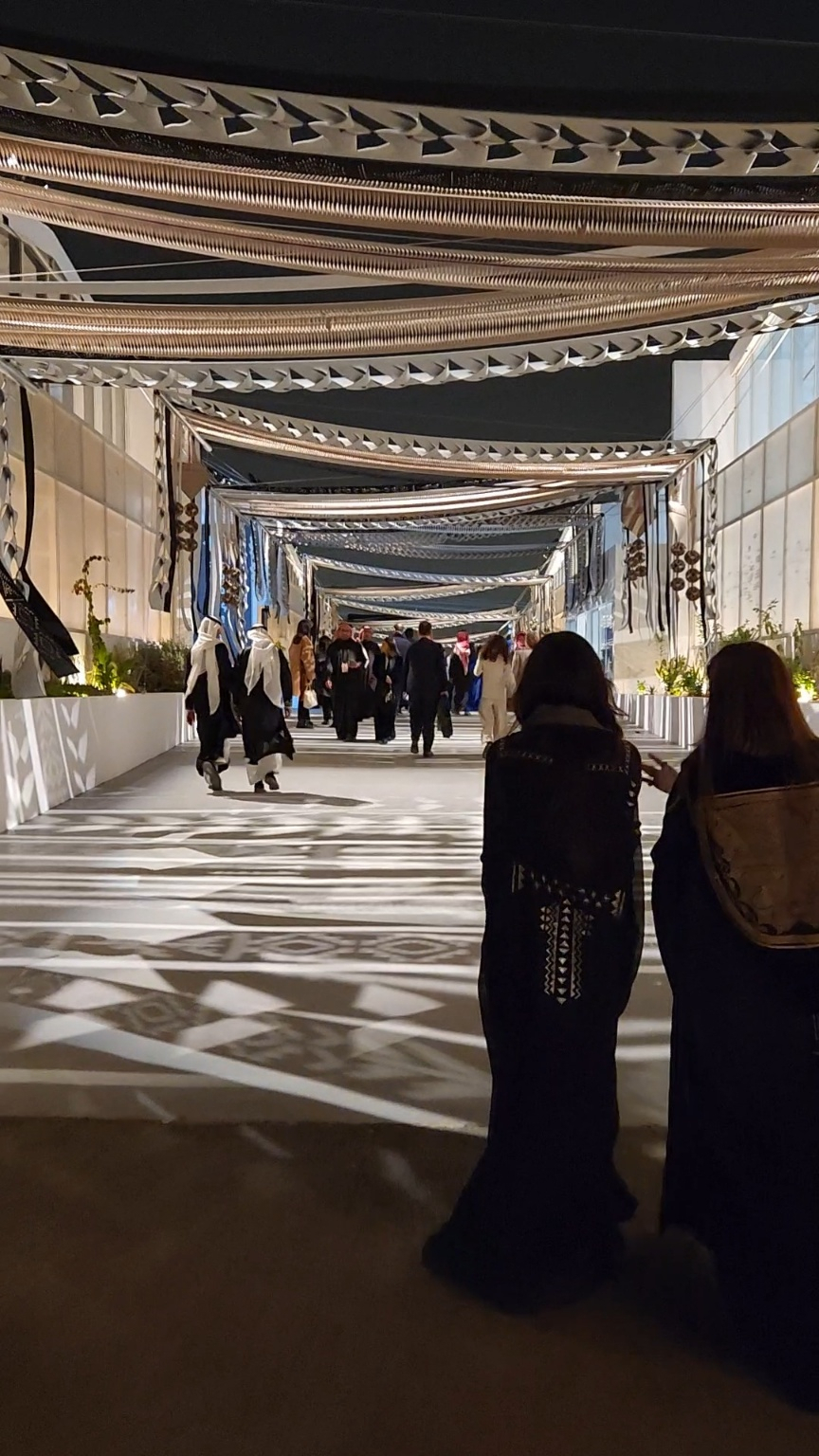
 |
| An installation view of "Women of Riyadh" (2023) by Christine Fenzl, in the background, at Diriyah Contemporary Art Biennale 2024 in Diriyah, Saudi Arabia. (Alessandro Brasile/Diriyah Biennale Foundation) |
DIRIYAH, Saudi Arabia - New history is being made in the historic site of Diriyah, home to the first Saudi Kingdom established in 1446, as the city on the northwestern outskirts of the Saudi capital Riyadh turns into a vibrant nexus of contemporary art every two years.
Launched in 2021, Diriyah Contemporary Art Biennale is a sprouting of Vision 2030, a comprehensive plan to prepare Saudi Arabia for the challenges of the post-fossil fuel age.
While the bold plan, announced in April 2016, is most often associated with political and economic reforms, it has signaled a sea change in the country’s long-held customs and traditions as well, transforming the daily lives of the Saudi people, especially women. Head coverings are no longer mandatory for Saudi women, and they may drive cars and leave home without being accompanied by a male family member.
The changes were palpable at the Diriyah Contemporary Art Biennale 2024 pre-opening on Feb. 19 attended by some 1,000 VIP guests.
Most of the women at the event wore floor-length robes, but many were without head coverings. Scenes of women engaged in lively conversations and discussing the artwork on display were perhaps enough for outsiders to reconsider their prejudices about women in Saudi Arabia.
It could be argued that the women gathered there were a select group of few. However, many of the staff at the biennale venue were young women who also seemed to exude confidence.
The culturally diverse curatorial team of nine, including German artistic director Ute Meta Bauer, were women, except for one.
A London-based gallerist at the pre-opening who had visited Saudi Arabia over several years observed that the pace of change has been incredible. “What you see now, only a few years ago, you could not even have imagined,” she said.
To a visitor, those changes are perhaps not immediately discernable until they are pointed out.
Such is the case of a series of photographs of 12 Saudi women titled “Women of Riyadh” by Berlin-based photographer Christine Fenzl. Commissioned for the biennale, the photographs taken over a period of two weeks document women of Riyadh. The subjects chose where they would be photographed – in the intimacy of their homes or outside in their neighborhoods. Some posed alone, taking a central place in the photograph, while others chose to be photographed with a family member or a partner. In the almost life-size portraits, these women of Riyadh look straight at the camera, meeting the viewers’ eyes.
Photographs of this kind and their exhibition in public space may be an everyday occurrence elsewhere, but in Saudi Arabia, it would have been unthinkable until a few years ago.
Renewal
Titled “After Rain,” the second edition of the Diriyah Contemporary Art Biennale, which ran from Feb. 20 to May 24, featured 177 works from 100 artists and artist collectives from around the world spread over six thematically arranged exhibition pavilions as well as the outdoor terraces, courtyards and off-site venues. The Diriyah Biennale Foundation commissioned 47 new works for this year’s biennale.
The title hints at the renewal and rebirth that follows rain. It is also emblematic of the sense of a new beginning after the unprecedented COVID-19 pandemic.
We know from experience that a walk after rain can lift our mood. There is a scientific reason for this. Petrichor, the earthy smell produced when rain falls on dry soil, has been shown to boost levels of serotonin and norepinephrine, acting like an antidepressant in humans.
Smell researcher and artist Sissel Tolaas was commissioned to recreate the post-rain smell which was delivered throughout the exhibition via mobile dispenser unit, offering an immersive olfactory experience, true to artistic director Bauer’s description of the biennale as an immersive one that engages all the senses.
Many of the artworks at Diriyah focused on basic human needs such as water, food and shelter.
The two-part installation “Orta Water,” comprising a mobile reservoir and portable water fountain, by Lucy and Jorge Orta, addressed the issue of global water scarcity and the possibilities of low-cost, easily accessible portable water devices. If one questions the place of a water reservoir in an art biennale, this response from Bauer might be helpful: Artistic practice is a form of knowledge production.
One notable aspect of the curatorial process was the extensive research trips across Saudi Arabia to meet with artists. These led to the “discovery” of older generations of artists, especially women artists. At Diriyah, three generations of Saudi artists were represented.
There was a lot of looking back on the past, an exploration of heritage, Bauer said in an interview with The Korea Herald at the biennale preopening.
Many senior artists who have been working since the 1960s or earlier, even as little attention was being paid to them, were introduced at the biennale. “Their role in shaping the art landscape should be appreciated and we should recognize the historical lineage that led to this moment,” said one of the co-curators.
Jeddah-based Safeya Binzagr is one such artist. She studied art in London in the late 1960s and upon return to Saudi Arabia, began documenting local traditions and customs as the country underwent industrialization and urbanization.
Created between 1997 and 1999, “Turathuna” (Our Tradition) is a series of detailed photogravure prints that capture the rich details of traditional dresses from various tribes and regions of Saudi Arabia.
 |
| An installation view of "Saudi Futurism" (2024) by Armin Linke and Ahmed Mater. (Marco Cappellettii/ Diriyah Biennale Foundation) |
One of the few works at Diriyah that cast a critical look at contemporary society was “Saudi Futurism," a collaboration between Berlin-based photographer and filmmaker Armin Linke and Ahmed Mater, a Riyadh-based multidisciplinary artist known for his photography and conceptual works.
Linke and Mater traveled throughout Saudi Arabia, taking photos of different sites, including the exhibition of the much-touted yet controversial NEOM megaproject, a futuristic desert development on the Red Sea coast.
The resulting installation examined the changing infrastructure of Saudi Arabia and the envisioned futures of the past and the present. Multi-sized prints of the photographs are installed in “frames,” which allow for easy changing of the prints, suggesting how visions and technologies of one era can easily become outdated and are constantly being replaced.
If one came to Diriyah expecting to be shocked, as is the experience in many contemporary art biennales, Diriyah did not deliver. “Do we need to be shocked?” asked Bauer, adding, “I am stunned by what artworks can evoke.”
 |
| An installation view of "Now That I've Lost You In My Dreams Where Do We Meet?" (2021/2024) by Sara Abdu. (Marco Cappellettii/Diriyah Biennale Foundation) |
 |
| An installation view of "Abundance & Scarcity" (2024) by Azra Akšamija on Feb. 19. (Kim Hoo-ran/The Korea Herald) |









